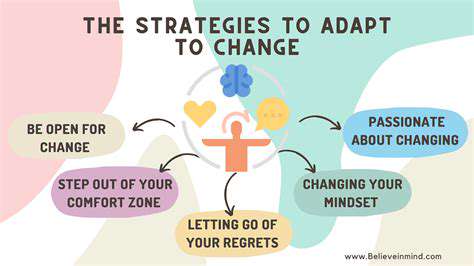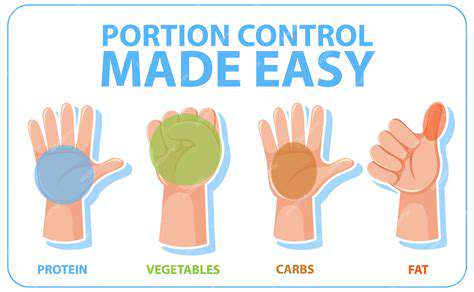Best Ways to Track Your Healthy Habits
Categorizing and Defining Your Habits
Understanding Habit Categorization
Categorizing your habits is a crucial first step in tracking them effectively. This involves grouping similar behaviors together for better analysis. For instance, you might categorize healthy eating habits as one group, encompassing activities like meal prepping, choosing fruits and vegetables, and limiting processed foods. Another group could be physical activity, encompassing different types of exercise and movement throughout the day. By creating these categories, you gain a broader overview of your overall health routine and can identify patterns and areas for improvement.
A well-defined categorization system enables you to easily track and analyze your progress. Instead of simply noting down every single action, you can focus on the overall category and gain a more comprehensive understanding of your lifestyle choices. This structured approach will help you see the big picture and identify areas where you may need to adjust your habits or incorporate new ones.
Defining Specific Habits Within Categories
Once you've established broad categories, it's time to define the specific habits within each. For example, within the healthy eating category, you might include specific habits like eating breakfast daily, consuming 5 servings of fruits and vegetables, and limiting sugar intake. Similarly, within physical activity, you might define habits like walking for 30 minutes most days, doing strength training twice a week, or taking the stairs instead of the elevator. Clearly defining these specific habits allows for detailed tracking and measurement of your progress.
This detailed approach provides a more granular perspective on your habits and enables you to assess their impact on your overall health. By identifying specific actions, you can monitor progress and make more targeted adjustments to your lifestyle.
Identifying and Recording Your Current Habits
A crucial aspect of tracking habits is accurately identifying and recording your current habits. This involves honestly assessing what you currently do, both positive and negative habits. It's essential to be as objective and thorough as possible. Don't just focus on the positive; acknowledge any unhealthy or unproductive habits as well. Recording your habits helps you gain a realistic understanding of your starting point and allows you to track progress effectively.
This process requires self-awareness and honest reflection. Use a journal, a habit tracking app, or a dedicated spreadsheet to meticulously document your daily activities. Be specific about the times, duration, and details of each habit. This detailed record will serve as a valuable benchmark for future comparisons and will help you identify areas for improvement.
Setting Realistic Goals for Habit Change
After identifying your current habits, it's essential to set realistic goals for change. Instead of aiming for drastic transformations overnight, focus on small, achievable steps within each category. For example, if you want to increase your physical activity, aim to walk for 15 minutes daily instead of aiming for an hour-long run immediately. This gradual approach is more sustainable and less likely to lead to frustration and abandonment.
Focus on making lasting changes, not just quick fixes. Prioritize consistency over intensity. Remember that progress is measured in small steps over time. By setting achievable goals, you increase your chances of success and build momentum for continued positive change.
Tracking and Measuring Your Progress
Tracking your progress is vital for maintaining motivation and identifying areas needing adjustment. Use a system that allows you to monitor your habit adherence over time. This could involve using a habit tracking app, a simple spreadsheet, or a dedicated journal. Regularly review your progress to identify patterns and areas where you might be falling short.
Celebrate your successes, no matter how small. Acknowledge your efforts and the progress you've made. This positive reinforcement will help you stay motivated and committed to your goals. Regularly review your tracking data to analyze your progress, identifying areas of success and areas needing improvement.
Leveraging Technology for Enhanced Tracking
Utilizing Fitness Trackers for Comprehensive Data
Fitness trackers have revolutionized personal health management by providing detailed insights into daily activity levels. These devices, ranging from basic step counters to sophisticated smartwatches, meticulously monitor steps, distance traveled, calories burned, and even sleep patterns. By meticulously recording this data, users gain a clear understanding of their activity levels and can identify areas for improvement in their daily routines.
Beyond basic metrics, many fitness trackers now offer advanced features like heart rate monitoring and activity zone tracking. This allows users to tailor their workouts to specific intensity levels, maximizing their efficiency and promoting optimal health outcomes. Furthermore, the ability to set goals and receive personalized feedback further motivates users towards a healthier lifestyle.
Employing Mobile Applications for Personalized Insights
Smartphones have become indispensable tools for health management, thanks to an array of dedicated health and fitness apps. These apps can be highly effective tools for tracking various aspects of a person's well-being, from daily food intake to exercise routines. Users can meticulously log their meals, noting calorie counts and nutritional information, and the apps can provide personalized recommendations based on individual needs and dietary preferences.
Many apps go beyond simple logging, offering personalized workout plans tailored to individual fitness levels and goals. Users can track their progress, receive encouragement, and stay motivated through interactive features and real-time feedback. These applications are often synced with wearable devices, creating a comprehensive data ecosystem for holistic health management.
Creating a Structured Journal for Detailed Records
While technology offers many advantages, the simple act of maintaining a structured journal can provide valuable insights into personal health habits. Writing down daily activities, including exercise routines, dietary choices, and emotional well-being, can help identify patterns and trends. This practice can also foster a deeper understanding of personal triggers and motivations, helping individuals develop more sustainable healthy habits.
A dedicated journal can serve as a powerful tool for self-reflection and accountability. By meticulously documenting progress and challenges, users can gain a more holistic perspective on their overall well-being. This approach fosters a deeper connection with personal health goals, enhancing motivation and promoting long-term adherence to healthy habits.
Leveraging Digital Calendars for Scheduled Activities
Integrating digital calendars into health tracking strategies can be remarkably effective. Scheduling regular exercise sessions, doctor appointments, and other health-related activities directly into a calendar ensures they don't get overlooked. This proactive approach fosters a sense of structure and discipline, making it easier to adhere to established routines.
Utilizing Data Visualization Tools for Pattern Recognition
Data visualization tools offer a powerful way to analyze health data and identify meaningful patterns. By graphically representing activity levels, dietary choices, and other relevant metrics, these tools make it easier to spot trends and understand how different factors affect overall well-being. Identifying these patterns enables users to make data-driven adjustments to their habits and optimize their health strategies.
Setting Realistic Goals and Monitoring Progress
Setting achievable goals is crucial for long-term success in health tracking. Unrealistic expectations can lead to frustration and abandonment of healthy habits. By setting realistic, measurable goals, users can track their progress effectively and stay motivated. Regularly monitoring progress allows for adjustments to strategies as needed, ensuring that goals remain attainable and that efforts remain aligned with personal objectives.
Seeking Professional Guidance for Personalized Strategies
While personal tracking is valuable, seeking professional guidance can further enhance health tracking strategies. Registered dieticians, personal trainers, and other healthcare professionals can provide tailored recommendations based on individual needs and health conditions. Their expertise can help users develop personalized plans that address specific challenges and maximize the effectiveness of tracking efforts. This professional support also provides a crucial element of accountability and ensures that strategies align with overall health goals.

Read more about Best Ways to Track Your Healthy Habits
Hot Recommendations
-
*Guide to Managing Gout Through Diet
-
*Best Habits for Financial Well being
-
*How to Build a Routine for Better Mental Health
-
*How to Eat Healthy on a Budget [Tips & Meal Ideas]
-
*Guide to Practicing Self Acceptance
-
*How to Incorporate More Movement Into Your Day
-
*Guide to Managing Chronic Pain Naturally
-
*Guide to Building a Reading Habit for Well being
-
*Top 5 Weight Loss Supplements That Actually Work
-
*Best Exercises for Postpartum Recovery [Beyond Abdominal Work]











